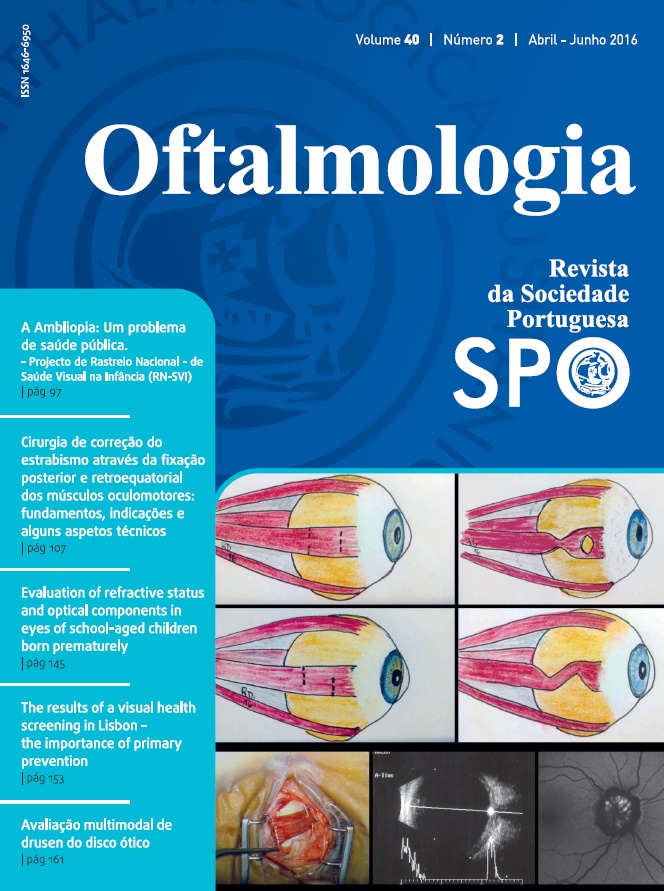Evaluation of refractive status and optical components in eyes of school-aged children born prematurely
DOI:
https://doi.org/10.48560/rspo.7583Resumo
Purpose: To evaluate the visual function and determine the factors associated with the development of refractive errors in school-aged children born prematurely.
Material and methods: One hundred and seventeen children with gestational age less than 37 weeks that were born between 1 January 2006 and 31 December 2007 were included. For statistical purpose, participants were divided into groups according to gestational age and birth weight (BW). All made a complete ophthalmic examination and measurement of optical components.
Results: There was no statistically significant increase of refractive errors in children born more prematurely (p>0.05), although the value of the spherical equivalent was greater for children with BW <1500g (p=0.042). It was observed a higher number of cases of strabismus in children with BW <2000 g (p=0.036). Regarding optical components, it was observed that infants born more prematurely had eyes with shallower anterior chamber, steeper corneal curvature and shorter axial length. It was also found that myopia in children with BW <2000g was caused by an increase of the corneal curvature, while in those with BW >2000 g was due to an increased axial length. Children with ROP had more prevalence of refractive errors compared with those without ROP (p=0.004).
Conclusions: Children born more prematurely and those with ROP appear to be at increased risk of developing refractive error and strabismus, which can persist throughout life. In these children, refractive error seems to be most affected by corneal curvature than by axial length.
Downloads
Downloads
Ficheiros Adicionais
Publicado
Como Citar
Edição
Secção
Licença
Não se esqueça de fazer o download do ficheiro da Declaração de Responsabilidade Autoral e Autorização para Publicação e de Conflito de Interesses
O artigo apenas poderá ser submetido com esse dois documentos.
Para obter o ficheiro da Declaração de Responsabilidade Autoral, clique aqui
Para obter o ficheiro de Conflito de Interesses, clique aqui





